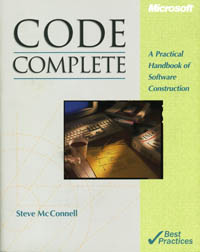
Computing is any goal-oriented activity requiring, benefiting from, or creating computing machinery. It includes the study and experimentation of algorithmic processes, and the development of both hardware and software. Computing has scientific, engineering, mathematical, technological, and social aspects. Major computing disciplines include computer engineering, computer science, cybersecurity, data science, information systems, information technology, and software engineering.
Computer programming or coding is the composition of sequences of instructions, called programs, that computers can follow to perform tasks. It involves designing and implementing algorithms, step-by-step specifications of procedures, by writing code in one or more programming languages. Programmers typically use high-level programming languages that are more easily intelligible to humans than machine code, which is directly executed by the central processing unit. Proficient programming usually requires expertise in several different subjects, including knowledge of the application domain, details of programming languages and generic code libraries, specialized algorithms, and formal logic.
Software engineering is an engineering approach to software development. A practitioner, a software engineer, applies the engineering design process to develop software.
The waterfall model is a breakdown of development activities into linear sequential phases, meaning they are passed down onto each other, where each phase depends on the deliverables of the previous one and corresponds to a specialization of tasks. The approach is typical for certain areas of engineering design. In software development, it tends to be among the less iterative and flexible approaches, as progress flows in largely one direction through the phases of conception, initiation, analysis, design, construction, testing, deployment and maintenance. The waterfall model is the earliest SDLC approach that was used in software development.
A software bug is a bug in computer software.
Steven C. McConnell is an author of software engineering textbooks such as Code Complete, Rapid Development, and Software Estimation. He is cited as an expert in software engineering and project management.

Cargo cult is an umbrella term to denote various spiritual and political movements that arose among indigenous Melanesians during the early-mid 20th century. The definition of cargo cult is vague, having been used for "almost any sort of organised, village-based social movement with religious and political aspirations" and "a variety of forms of social unrest that ethnographers elsewhere tagged millenarian, messianic, nativistic, vitalistic, revivalistic, or culture-contact or adjustment movements". "Cargo cults" were often organised around a central charismatic prophet, who either pushed for the revival of ancestral traditions or the adoption of new traditions in order to appease ancestral spirits. Although many accounts focus on the acquisition of Western material goods, the definition of "cargo" was broader than this, with many such movements focused on spiritual salvation, or were political expressions of a desire for autonomy. Many scholars see the movements as a reaction to the disruption to traditional ways of life caused by the colonisation of Melanesia during the late 19th century by Western powers and the resulting oppression and discrimination, as well as the contact between traditional gift giving and colonial capitalist economies.
In software engineering, a design pattern describes a relatively small, well-defined aspect of a computer program in terms of how to write the code.
Rapid application development (RAD), also called rapid application building (RAB), is both a general term for adaptive software development approaches, and the name for James Martin's method of rapid development. In general, RAD approaches to software development put less emphasis on planning and more emphasis on an adaptive process. Prototypes are often used in addition to or sometimes even instead of design specifications.

Open-source software (OSS) is computer software that is released under a license in which the copyright holder grants users the rights to use, study, change, and distribute the software and its source code to anyone and for any purpose. Open-source software may be developed in a collaborative, public manner. Open-source software is a prominent example of open collaboration, meaning any capable user is able to participate online in development, making the number of possible contributors indefinite. The ability to examine the code facilitates public trust in the software.
The following outline is provided as an overview of and topical guide to software engineering:

Code Complete is a software development book, written by Steve McConnell and published in 1993 by Microsoft Press, encouraging developers to continue past code-and-fix programming and the big design up front and waterfall models. It is also a compendium of software construction techniques, which include techniques from naming variables to deciding when to write a subroutine.

The history of software engineering begins around the 1960s. Writing software has evolved into a profession concerned with how best to maximize the quality of software and of how to create it. Quality can refer to how maintainable software is, to its stability, speed, usability, testability, readability, size, cost, security, and number of flaws or "bugs", as well as to less measurable qualities like elegance, conciseness, and customer satisfaction, among many other attributes. How best to create high quality software is a separate and controversial problem covering software design principles, so-called "best practices" for writing code, as well as broader management issues such as optimal team size, process, how best to deliver software on time and as quickly as possible, work-place "culture", hiring practices, and so forth. All this falls under the broad rubric of software engineering.
In software development, code reuse, also called software reuse, is the use of existing software, or software knowledge, to build new software, following the reusability principles.
In the context of software engineering, software quality refers to two related but distinct notions:
The Software Peter principle is used in software engineering to describe a dying project which has become too complex to be understood even by its own developers.
Coding best practices or programming best practices are a set of informal, sometimes personal, rules that many software developers, in computer programming follow to improve software quality. Many computer programs require being robust and reliable for long periods of time, so any rules need to facilitate both initial development and subsequent maintenance of source code by people other than the original authors.
Software construction is a software engineering discipline. It is the detailed creation of working meaningful software through a combination of coding, verification, unit testing, integration testing, and debugging. It is linked to all the other software engineering disciplines, most strongly to software design and software testing.
Application performance engineering is a method to develop and test application performance in various settings, including mobile computing, the cloud, and conventional information technology (IT).

Open source is source code that is made freely available for possible modification and redistribution. Products include permission to use the source code, design documents, or content of the product. The open-source model is a decentralized software development model that encourages open collaboration. A main principle of open-source software development is peer production, with products such as source code, blueprints, and documentation freely available to the public. The open-source movement in software began as a response to the limitations of proprietary code. The model is used for projects such as in open-source appropriate technology, and open-source drug discovery.






